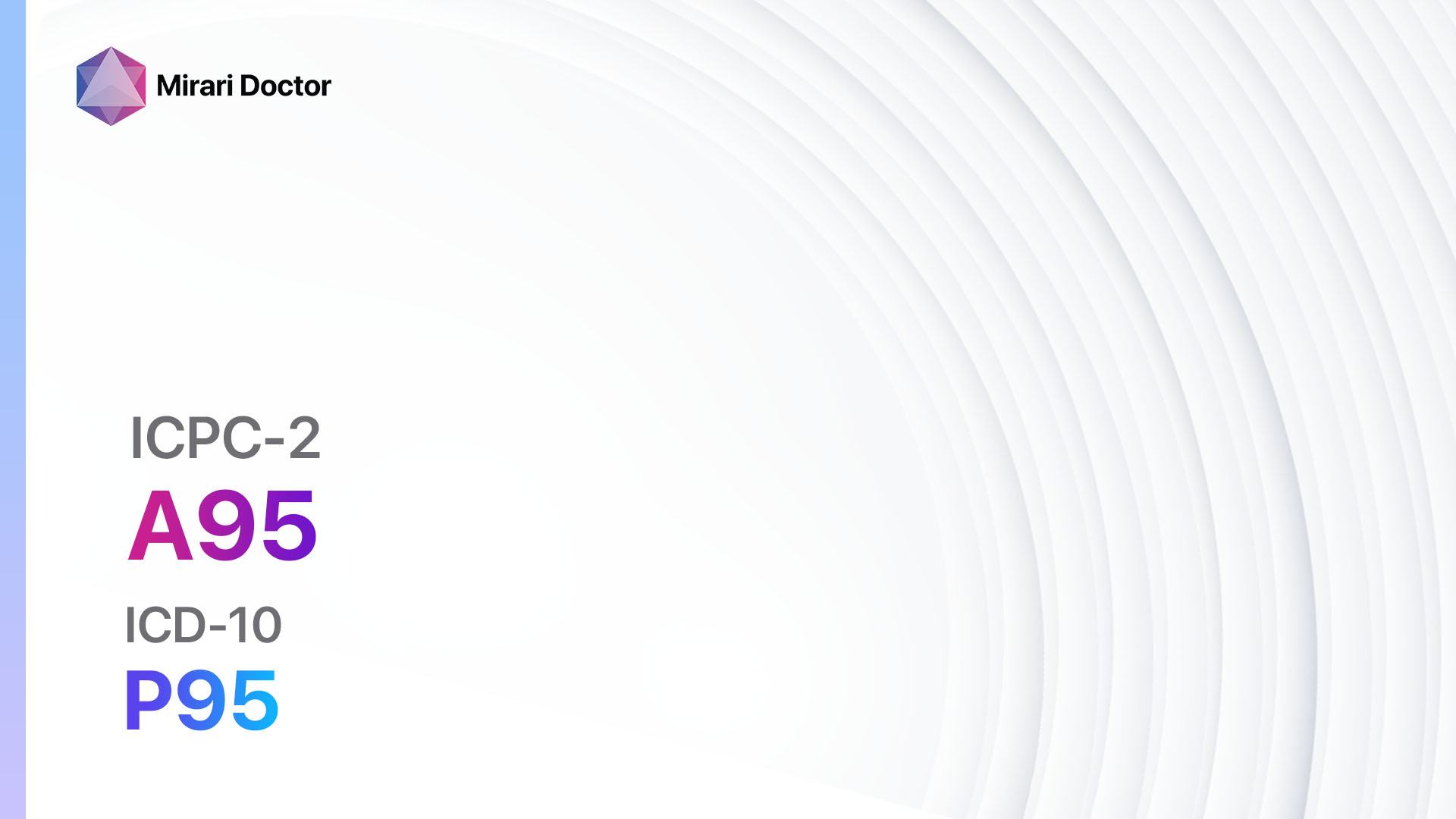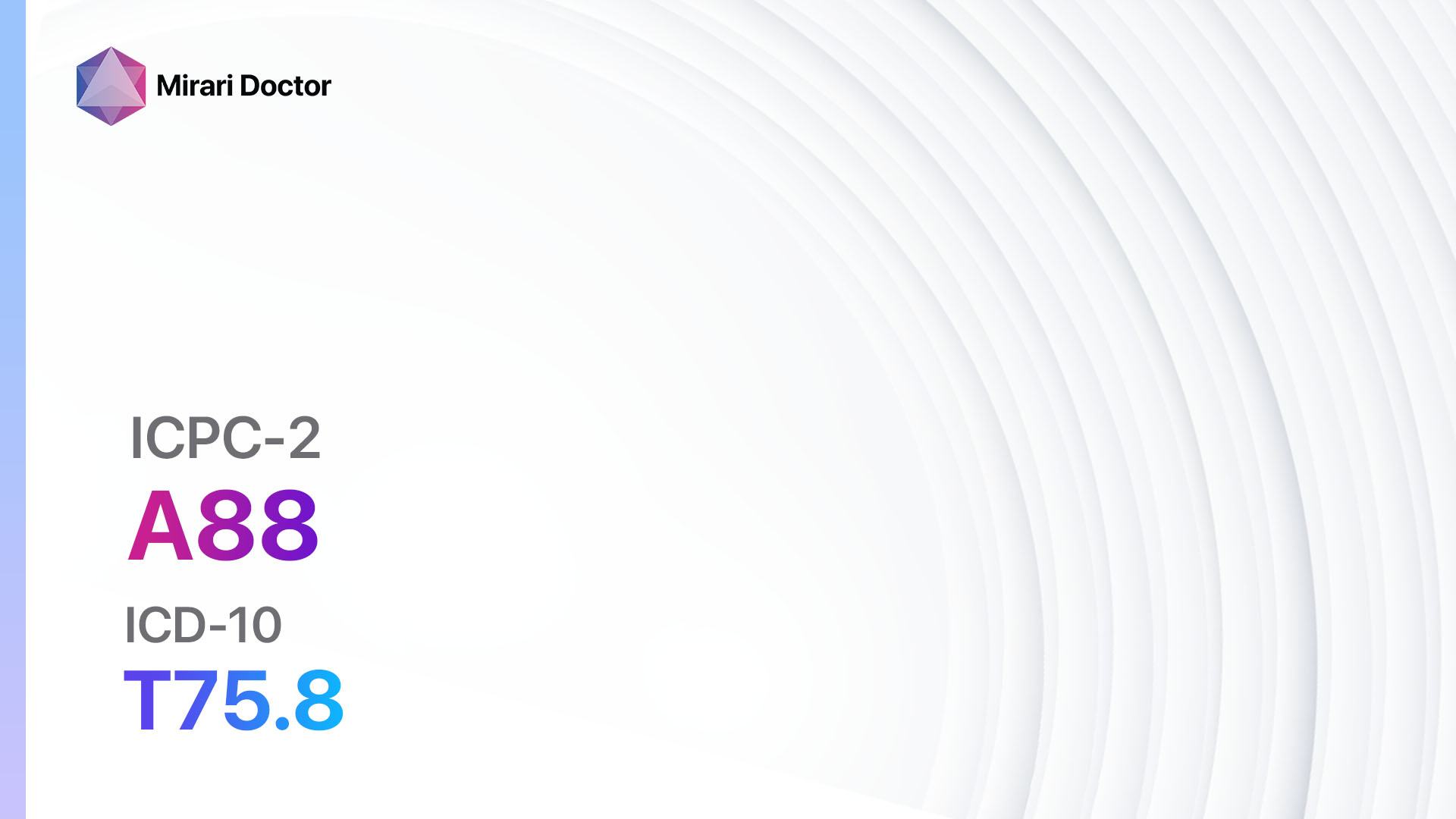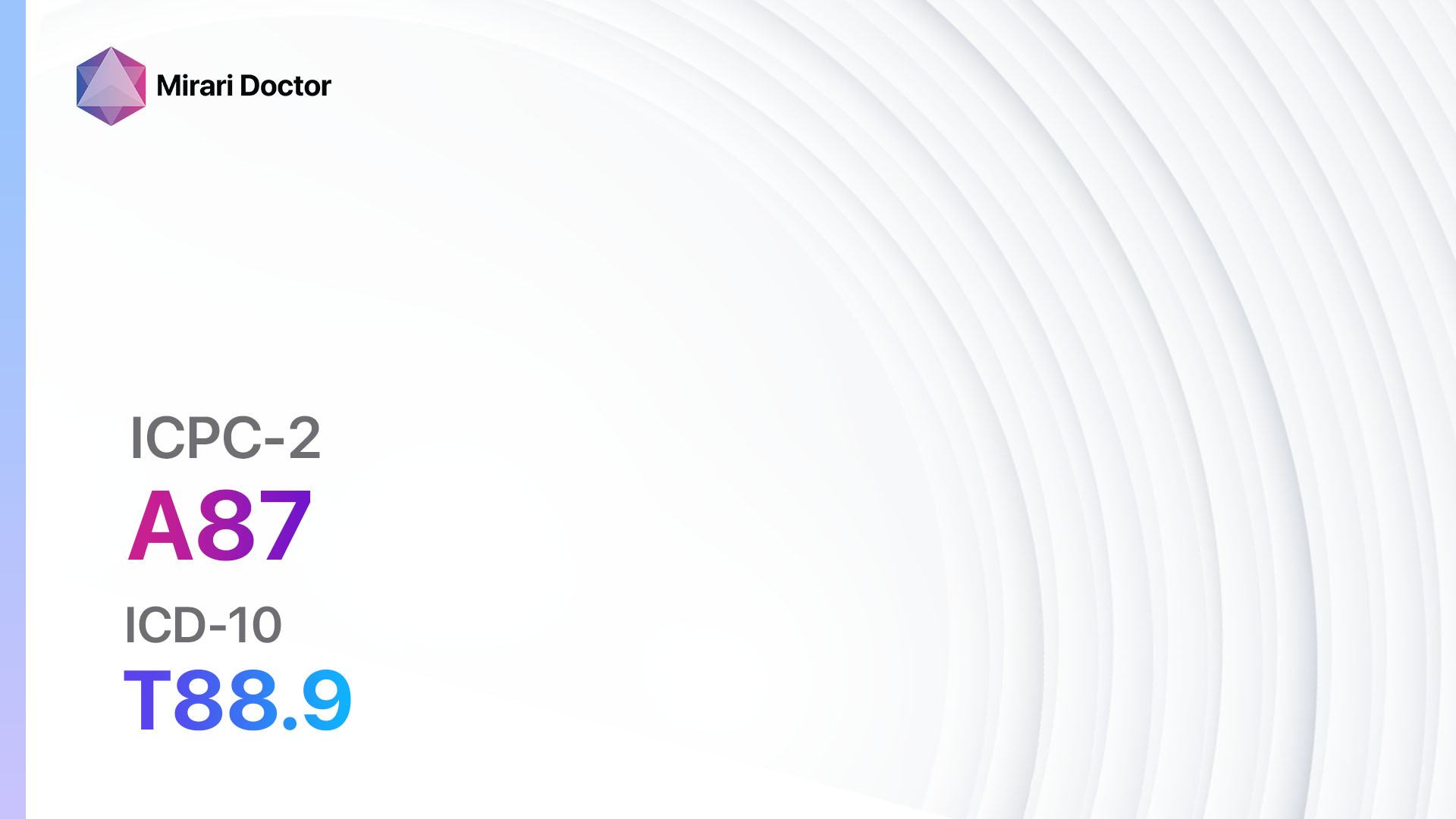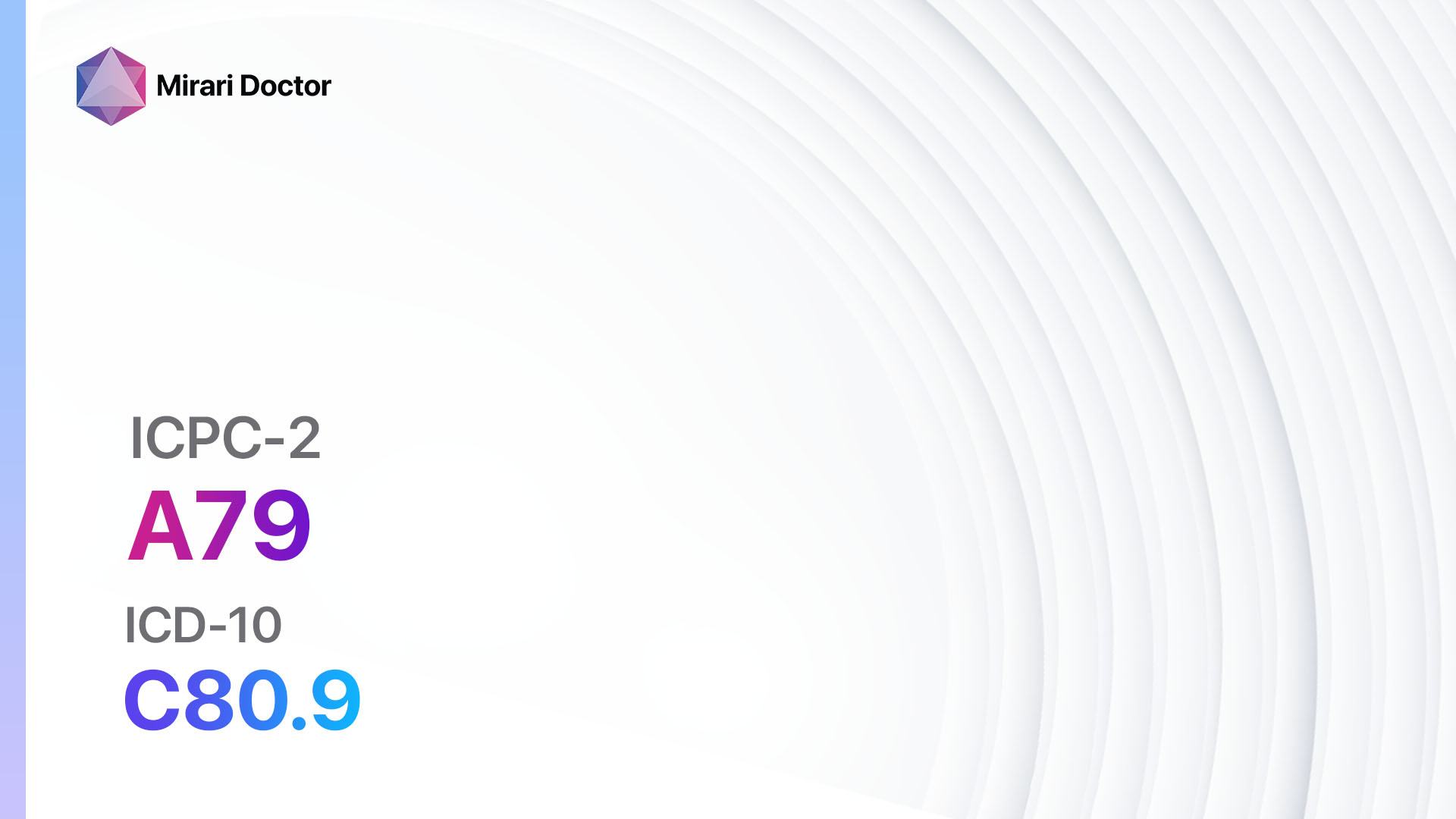
Introduction
Secondary effects of trauma refer to the physical and psychological symptoms that can arise as a result of a traumatic event[1]. These effects can vary widely depending on the nature and severity of the trauma[2]. The aim of this guide is to provide an overview of the symptoms, causes, diagnostic steps, possible interventions, and lifestyle interventions for secondary effects of trauma.
Codes
- ICPC-2 Code: A82 Secondary effect of trauma[3]
- ICD-10 Code: T98.3 Sequelae of complications of surgical and medical care, not elsewhere classified[4]
Symptoms
- Flashbacks: Recurrent and intrusive memories or images of the traumatic event[5].
- Nightmares: Disturbing dreams related to the traumatic event[5].
- Avoidance: Avoiding people, places, or activities that remind the individual of the traumatic event[5].
- Hyperarousal: Feeling constantly on edge, easily startled, or having difficulty sleeping[5].
- Emotional numbing: Feeling detached or emotionally numb[5].
- Irritability: Feeling easily irritated or having angry outbursts[5].
- Anxiety: Experiencing excessive worry, restlessness, or a sense of impending doom[5].
- Depression: Feeling sad, hopeless, or experiencing a loss of interest in activities[5].
- Physical symptoms: Headaches, stomachaches, muscle tension, or other physical complaints[5].
Causes
- Physical trauma: Injuries sustained from accidents, falls, or physical assaults[6].
- Emotional trauma: Witnessing or experiencing a distressing event, such as a natural disaster, violence, or abuse[6].
- Psychological trauma: Traumatic experiences that result in significant emotional distress, such as the loss of a loved one or a life-threatening illness[6].
Diagnostic Steps
Medical History
- Gather information about the traumatic event, including the nature, severity, and duration[7].
- Assess the patient’s current symptoms and their impact on daily functioning[7].
- Identify any previous trauma or mental health conditions[7].
- Evaluate the patient’s social support system and coping mechanisms[7].
Physical Examination
- Perform a general physical examination to rule out any underlying medical conditions[8].
- Assess vital signs, including blood pressure, heart rate, and respiratory rate[8].
- Evaluate for any physical signs of trauma, such as bruises, scars, or fractures[8].
- Observe the patient’s overall appearance, behavior, and level of distress[8].
Laboratory Tests
- There are no specific laboratory tests for diagnosing secondary effects of trauma. However, blood tests may be ordered to rule out any underlying medical conditions that could be contributing to the symptoms[9].
Diagnostic Imaging
- Diagnostic imaging is not typically used for diagnosing secondary effects of trauma. However, in cases where physical injuries are suspected, X-rays, CT scans, or MRIs may be ordered to assess the extent of the injuries[10].
Other Tests
- Psychological assessments: Various psychological tests and questionnaires may be used to assess the severity of symptoms and to screen for other mental health conditions, such as depression or anxiety disorders.
Follow-up and Patient Education
- Schedule regular follow-up appointments to monitor the patient’s progress and adjust the treatment plan as needed.
- Provide education to the patient and their family about the nature of secondary effects of trauma, coping strategies, and available resources for support.
Possible Interventions
Traditional Interventions
Medications:
Top 5 drugs for secondary effects of trauma:
- Selective serotonin reuptake inhibitors (SSRIs) (e.g., Sertraline, Escitalopram):
- Cost: Generic versions can be $3-$50/month.
- Contraindications: Hypersensitivity to SSRIs, concurrent use of monoamine oxidase inhibitors (MAOIs).
- Side effects: Nausea, headache, insomnia.
- Severe side effects: Serotonin syndrome, suicidal thoughts.
- Drug interactions: MAOIs, other serotonergic medications.
- Warning: Monitor for worsening of symptoms and suicidality, especially in the initial weeks of treatment.
- Benzodiazepines (e.g., Diazepam, Lorazepam):
- Cost: Generic versions can be $4-$30/month.
- Contraindications: Acute narrow-angle glaucoma, respiratory insufficiency.
- Side effects: Sedation, dizziness, confusion.
- Severe side effects: Respiratory depression, dependence.
- Drug interactions: Alcohol, opioids.
- Warning: Use with caution in the elderly and patients with a history of substance abuse.
- Prazosin:
- Cost: Generic versions can be $10-$50/month.
- Contraindications: Hypersensitivity to alpha-blockers, severe hypotension.
- Side effects: Dizziness, headache, fatigue.
- Severe side effects: Orthostatic hypotension, priapism.
- Drug interactions: Other antihypertensive medications.
- Warning: Monitor blood pressure regularly, especially during dose titration.
- Antidepressants (e.g., Amitriptyline, Nortriptyline):
- Cost: Generic versions can be $4-$30/month.
- Contraindications: Recent myocardial infarction, concurrent use of MAOIs.
- Side effects: Dry mouth, constipation, blurred vision.
- Severe side effects: Cardiac arrhythmias, serotonin syndrome.
- Drug interactions: MAOIs, other serotonergic medications.
- Warning: Monitor for cardiac side effects, especially in patients with pre-existing cardiovascular conditions.
- Antipsychotics (e.g., Risperidone, Quetiapine):
- Cost: Generic versions can be $10-$50/month.
- Contraindications: Hypersensitivity to antipsychotics, dementia-related psychosis.
- Side effects: Sedation, weight gain, extrapyramidal symptoms.
- Severe side effects: Neuroleptic malignant syndrome, tardive dyskinesia.
- Drug interactions: Other medications that prolong the QT interval.
- Warning: Monitor for metabolic side effects, including weight gain and dyslipidemia.
Alternative Drugs:
- Beta-blockers (e.g., Propranolol): May help reduce symptoms of hyperarousal and anxiety.
- Alpha-2 adrenergic agonists (e.g., Clonidine): Can be used to manage hyperarousal symptoms.
- Anticonvulsants (e.g., Gabapentin, Pregabalin): May be beneficial for managing symptoms of anxiety and insomnia.
- Atypical antipsychotics (e.g., Olanzapine, Aripiprazole): Can be used for the management of severe anxiety or agitation.
Surgical Procedures:
- Surgical interventions are not typically indicated for the treatment of secondary effects of trauma. However, in cases where physical injuries require surgical intervention, procedures such as fracture repair or wound closure may be necessary.
Alternative Interventions
- Eye Movement Desensitization and Reprocessing (EMDR): A psychotherapy technique that helps individuals process traumatic memories and reduce distress. Cost: $75-$200 per session.
- Cognitive-Behavioral Therapy (CBT): A type of therapy that focuses on identifying and changing negative thought patterns and behaviors. Cost: $100-$200 per session.
- Mindfulness-Based Stress Reduction (MBSR): A program that combines mindfulness meditation, yoga, and body awareness to reduce stress and promote well-being. Cost: $200-$400 for an 8-week program.
- Art Therapy: The use of art materials and creative processes to explore and express emotions related to trauma. Cost: $50-$150 per session.
- Support Groups: Group therapy sessions led by a trained facilitator, providing a supportive environment for individuals to share their experiences and learn from others. Cost: Varies depending on the organization or facility offering the support group.
Lifestyle Interventions
- Regular Exercise: Engaging in physical activity can help reduce symptoms of anxiety and depression. Cost: Varies depending on the chosen activity (e.g., gym membership, fitness classes).
- Healthy Diet: Consuming a balanced diet rich in fruits, vegetables, whole grains, and lean proteins can support overall well-being. Cost: Varies depending on individual food choices and dietary preferences.
- Sleep Hygiene: Establishing a regular sleep schedule and practicing good sleep habits can improve sleep quality. Cost: Minimal to no cost.
- Stress Management Techniques: Learning and practicing stress management techniques, such as deep breathing exercises, meditation, or yoga, can help reduce stress levels. Cost: Varies depending on the chosen technique (e.g., yoga classes, meditation apps).
- Social Support: Building and maintaining a strong support network of family, friends, or support groups can provide emotional support and a sense of belonging. Cost: Minimal to no cost.
It is important to note that the cost ranges provided are approximate and may vary depending on the location and availability of the interventions. It is recommended to consult with healthcare professionals or insurance providers for accurate cost information.
Mirari Cold Plasma Alternative Intervention
Understanding Mirari Cold Plasma
- Safe and Non-Invasive Treatment: Mirari Cold Plasma is a safe and non-invasive treatment option for various skin conditions. It does not require incisions, minimizing the risk of scarring, bleeding, or tissue damage.
- Efficient Extraction of Foreign Bodies: Mirari Cold Plasma facilitates the removal of foreign bodies from the skin by degrading and dissociating organic matter, allowing easier access and extraction.
- Pain Reduction and Comfort: Mirari Cold Plasma has a local analgesic effect, providing pain relief during the treatment, making it more comfortable for the patient.
- Reduced Risk of Infection: Mirari Cold Plasma has antimicrobial properties, effectively killing bacteria and reducing the risk of infection.
- Accelerated Healing and Minimal Scarring: Mirari Cold Plasma stimulates wound healing and tissue regeneration, reducing healing time and minimizing the formation of scars.
Mirari Cold Plasma Prescription
Video instructions for using Mirari Cold Plasma Device – A82 Secondary effect of trauma (ICD-10:T98.3)
| Mild | Moderate | Severe |
| Mode setting: 7 (Immunotherapy) Location: 1 (Sacrum) Morning: 15 minutes, Evening: 15 minutes |
Mode setting: 7 (Immunotherapy) Location: 1 (Sacrum) Morning: 30 minutes, Lunch: 30 minutes, Evening: 30 minutes |
Mode setting: 7 (Immunotherapy) Location: 1 (Sacrum) Morning: 30 minutes, Lunch: 30 minutes, Evening: 30 minutes |
| Mode setting: 7 (Immunotherapy) Location: 4 (Heart, Bile & Pancreas) Morning: 15 minutes, Evening: 15 minutes |
Mode setting: 7 (Immunotherapy) Location: 4 (Heart, Bile & Pancreas) Morning: 30 minutes, Lunch: 30 minutes, Evening: 30 minutes |
Mode setting: 7 (Immunotherapy) Location: 4 (Heart, Bile & Pancreas) Morning: 30 minutes, Lunch: 30 minutes, Evening: 30 minutes |
| Mode setting: 7 (Immunotherapy) Location: 7 (Neuro system & ENT) Morning: 15 minutes, Evening: 15 minutes |
Mode setting: 7 (Immunotherapy) Location: 7 (Neuro system & ENT) Morning: 30 minutes, Lunch: 30 minutes, Evening: 30 minutes |
Mode setting: 7 (Immunotherapy) Location: 7 (Neuro system & ENT) Morning: 30 minutes, Lunch: 30 minutes, Evening: 30 minutes |
| Total Morning: 45 minutes approx. $7.50 USD, Evening: 45 minutes approx. $7.50 USD |
Total Morning: 90 minutes approx. $15 USD, Lunch: 90 minutes approx. $15 USD, Evening: 90 minutes approx. $15 USD, |
Total Morning: 90 minutes approx. $15 USD, Lunch: 90 minutes approx. $15 USD, Evening: 90 minutes approx. $15 USD, |
| Usual treatment for 7-60 days approx. $105 USD – $900 USD | Usual treatment for 6-8 weeks approx. $1,890 USD – $2,520 USD |
Usual treatment for 3-6 months approx. $4,050 USD – $8,100 USD
|
 |
|
Use the Mirari Cold Plasma device to treat Secondary effect of trauma effectively.
WARNING: MIRARI COLD PLASMA IS DESIGNED FOR THE HUMAN BODY WITHOUT ANY ARTIFICIAL OR THIRD PARTY PRODUCTS. USE OF OTHER PRODUCTS IN COMBINATION WITH MIRARI COLD PLASMA MAY CAUSE UNPREDICTABLE EFFECTS, HARM OR INJURY. PLEASE CONSULT A MEDICAL PROFESSIONAL BEFORE COMBINING ANY OTHER PRODUCTS WITH USE OF MIRARI.
Step 1: Cleanse the Skin
- Start by cleaning the affected area of the skin with a gentle cleanser or mild soap and water. Gently pat the area dry with a clean towel.
Step 2: Prepare the Mirari Cold Plasma device
- Ensure that the Mirari Cold Plasma device is fully charged or has fresh batteries as per the manufacturer’s instructions. Make sure the device is clean and in good working condition.
- Switch on the Mirari device using the power button or by following the specific instructions provided with the device.
- Some Mirari devices may have adjustable settings for intensity or treatment duration. Follow the manufacturer’s instructions to select the appropriate settings based on your needs and the recommended guidelines.
Step 3: Apply the Device
- Place the Mirari device in direct contact with the affected area of the skin. Gently glide or hold the device over the skin surface, ensuring even coverage of the area experiencing.
- Slowly move the Mirari device in a circular motion or follow a specific pattern as indicated in the user manual. This helps ensure thorough treatment coverage.
Step 4: Monitor and Assess:
- Keep track of your progress and evaluate the effectiveness of the Mirari device in managing your Secondary effect of trauma. If you have any concerns or notice any adverse reactions, consult with your health care professional.
Note
This guide is for informational purposes only and should not replace the advice of a medical professional. Always consult with your healthcare provider or a qualified medical professional for personal advice, diagnosis, or treatment. Do not solely rely on the information presented here for decisions about your health. Use of this information is at your own risk. The authors of this guide, nor any associated entities or platforms, are not responsible for any potential adverse effects or outcomes based on the content.
Mirari Cold Plasma System Disclaimer
- Purpose: The Mirari Cold Plasma System is a Class 2 medical device designed for use by trained healthcare professionals. It is registered for use in Thailand and Vietnam. It is not intended for use outside of these locations.
- Informational Use: The content and information provided with the device are for educational and informational purposes only. They are not a substitute for professional medical advice or care.
- Variable Outcomes: While the device is approved for specific uses, individual outcomes can differ. We do not assert or guarantee specific medical outcomes.
- Consultation: Prior to utilizing the device or making decisions based on its content, it is essential to consult with a Certified Mirari Tele-Therapist and your medical healthcare provider regarding specific protocols.
- Liability: By using this device, users are acknowledging and accepting all potential risks. Neither the manufacturer nor the distributor will be held accountable for any adverse reactions, injuries, or damages stemming from its use.
- Geographical Availability: This device has received approval for designated purposes by the Thai and Vietnam FDA. As of now, outside of Thailand and Vietnam, the Mirari Cold Plasma System is not available for purchase or use.
References
- Figley, C. R. (1995). Compassion fatigue: Toward a new understanding of the costs of caring. In B. H. Stamm (Ed.), Secondary traumatic stress: Self-care issues for clinicians, researchers, and educators (pp. 3-28). The Sidran Press.
- Bride, B. E. (2007). Prevalence of secondary traumatic stress among social workers. Social Work, 52(1), 63-70.
- WONCA International Classification Committee. (1998). ICPC-2: International classification of primary care. Oxford University Press, USA.
- World Health Organization. (2015). International statistical classification of diseases and related health problems (10th ed.).
- American Psychiatric Association. (2013). Diagnostic and statistical manual of mental disorders (5th ed.). American Psychiatric Publishing.
- Substance Abuse and Mental Health Services Administration. (2014). Trauma-informed care in behavioral health services. Treatment Improvement Protocol (TIP) Series 57. HHS Publication No. (SMA) 13-4801. Rockville, MD: Substance Abuse and Mental Health Services Administration.
- Bickley, L. S. (2017). Bates’ guide to physical examination and history taking (12th ed.). Wolters Kluwer.
- Jarvis, C. (2020). Physical examination and health assessment (8th ed.). Elsevier.
- Pagana, K. D., Pagana, T. J., & Pagana, T. N. (2019). Mosby’s diagnostic and laboratory test reference (14th ed.). Elsevier.
- Greenspan, A. (2011). Orthopedic imaging: A practical approach (5th ed.). Lippincott Williams & Wilkins.
Related articles
Made in USA



























